
Upper back pain afflicts working men and women in all sorts of occupations. But no matter the demands of your job, you don’t have to suffer. If you’re experiencing upper back pain, these 8 upper back stretches can help relieve your pain in as little as 30 seconds.
Story Time: My Experience with Upper Back Pain
For a long time I experienced really irritating mid-back pain. And as a physical therapist, I had to figure out the cause. As it turned out, I had gotten into the habit of lugging around my clinic laptop in one hand for multiple hours every day without considering good body mechanics and posture.
After coming to my senses, I started carrying my laptop with both arms and elevated the rolling stands I tote around. These habit changes helped stop the mounting pain and brought gradual relief. However, the pain didn’t entirely disappear until I began a routine of upper back stretches. In the same way, these 8 stretches will help your upper back pain – and each one is easy to do!
8 Easy Upper Back Stretches
1. Elevated Child’s Pose Stretch
Child pose is a yoga position well-loved as a great upper back stretch. I like to modify it by using a countertop or the top of a chair or couch. This elevated support helps incorporate thoracic extension into the stretch.
Simply place your hands shoulder-width apart on a countertop. Step backward and bend at your hips until your torso is perpendicular to the floor, keeping your arms straight and your head neutral. To deepen the stretch, set your hips back even further. Hold for 15-30 seconds.
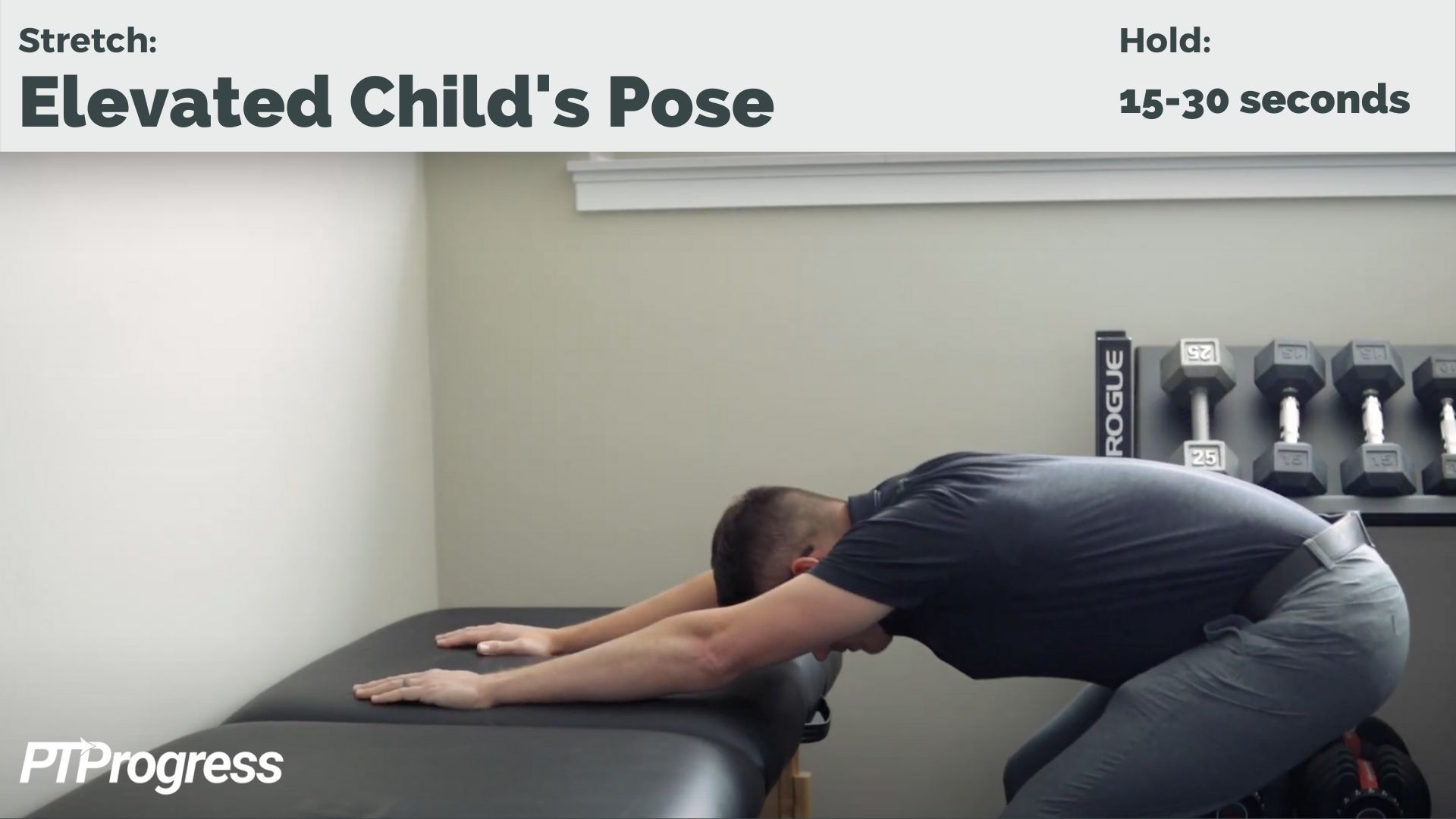
Do you ever feel so tight in your back, you wish you could get it to pop? In this elevated child pose stretch, you may find that your back almost always pops very quickly, which feels great. Use this easy stretch throughout the day for immediate relief from any tightness in your upper back.
2. Cat/Cow Stretch
The cat/cow stretch is a good one to follow the elevated child’s pose. For this stretch, work on moving the spine through flexion and extension.
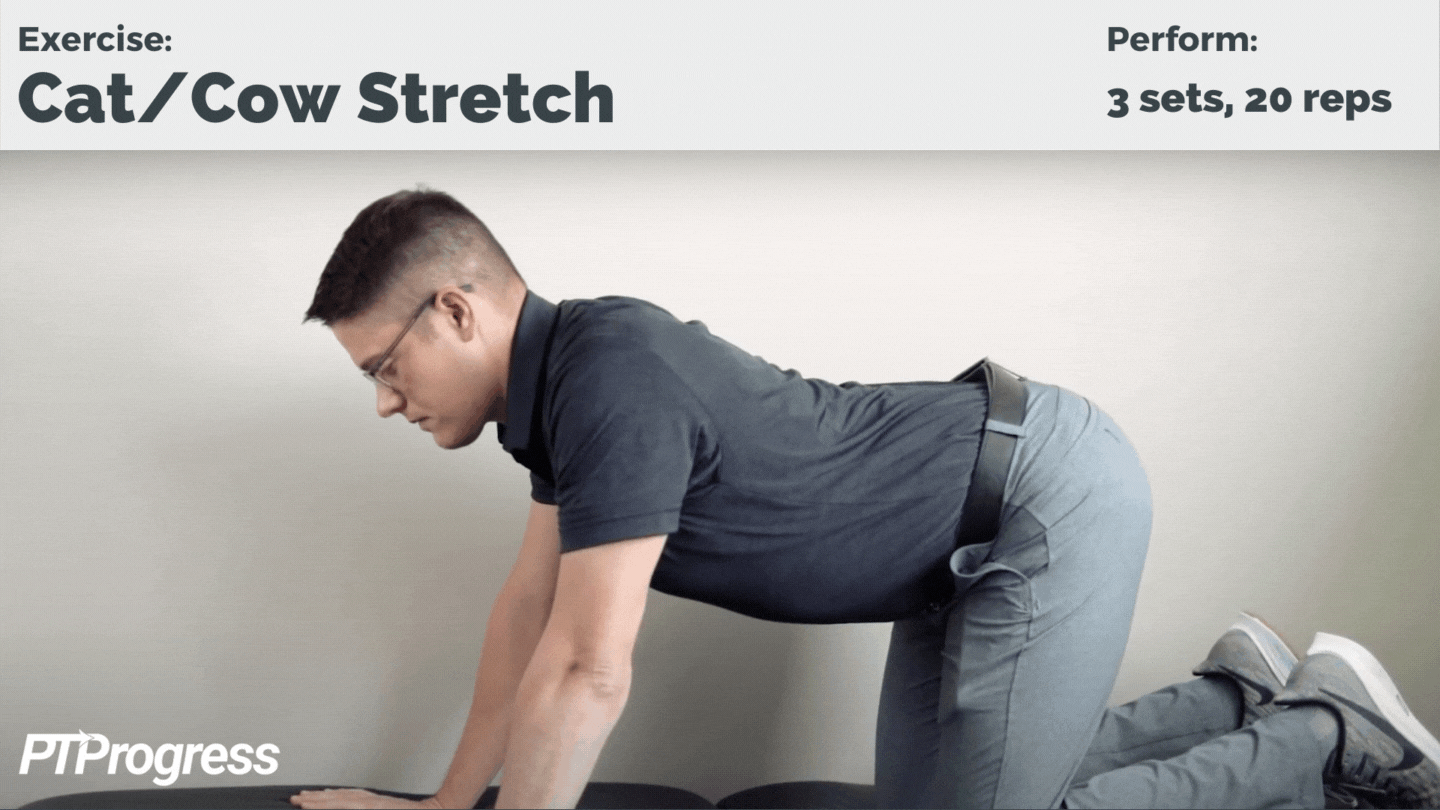
From a quadruped position (hands and knees), align your shoulders over your wrists and your hips over your knees. Take a deep breath as you drop your chest, scoop your back, and tilt your head back to the ceiling. This extended position is the “cow” part of the stretch: picture the hollowed-out back of a bovine.
On your exhale, reverse the direction of your back and arch it like an angry cat’s as you drop your head to your chest. Push up from your hands to round your back and separate your shoulder blades. Alternate directions/ animals with each slow breath, and finish in “child’s pose,” as shown above.
You can use the cat/cow stretch as a warmup to other upper back stretches or in addition to the elevated child’s pose. Try to perform 10 to 20 of these movements at a time throughout the day.
3. Cross Arm Rock Back
Another great upper back stretch is called the cross arm rock back. This movement isolates the paraspinal muscles of the entire back.
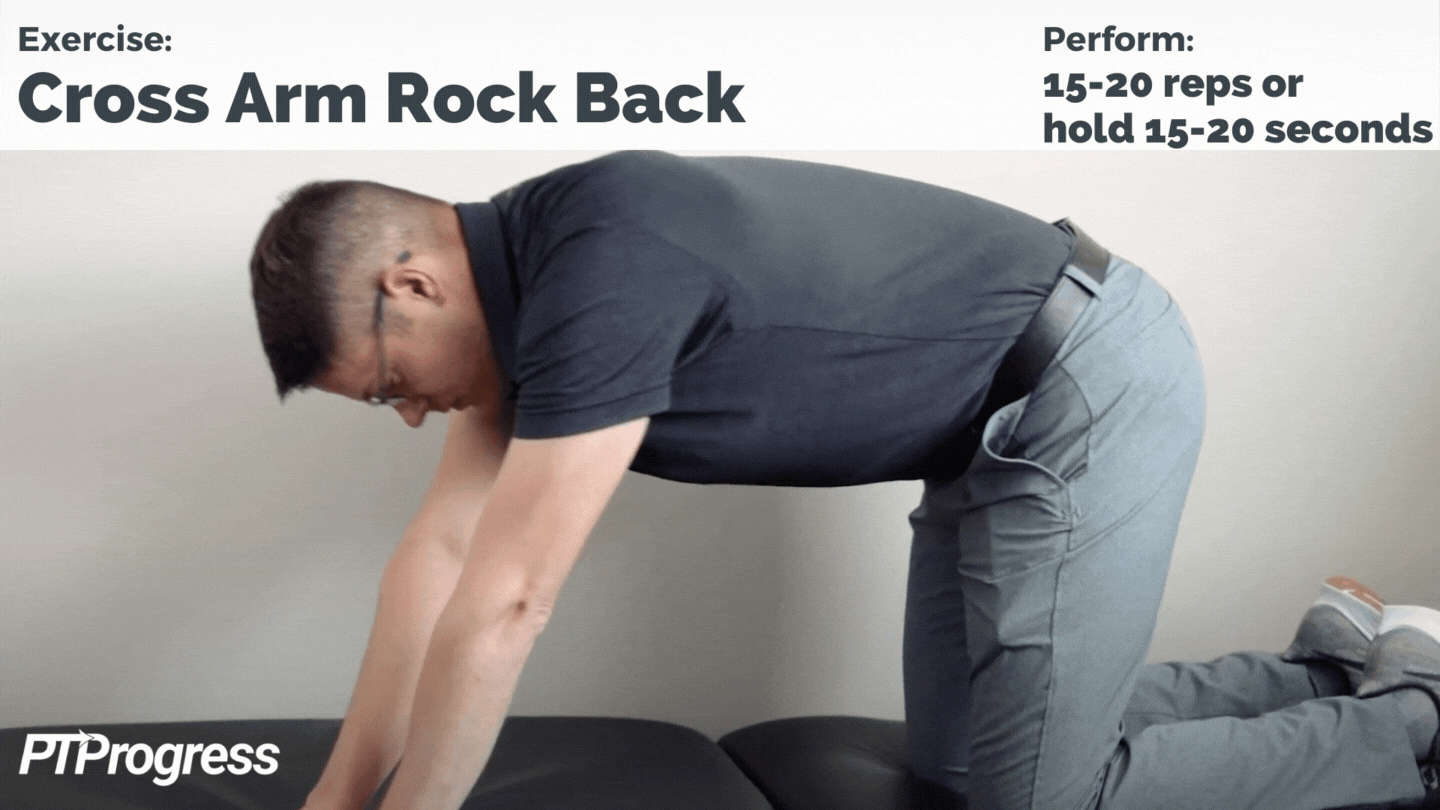
Starting on your hands and knees, reach one arm across and place your hand on top of the other. Maintaining a neutral spine, rock back so your hips move towards your feet. For a deeper stretch along the paraspinals, lean towards the side opposite your hands. Hold the stretch for 15 to 20 seconds, or move through the range 20 times.
If you experience pain on one side more than the other, this is definitely a good stretch to try because it targets the tight paraspinal muscles that can tense up on either side of the body.
4. Foam Roll Angel
This fourth stretch is a variation of one that you may have seen before. I call it the foam roll angel: you perform it by lying on your back along a foam roller length-wise. In this position, you’ll feel a great stretch as it opens up the chest and reverses any habitual rounding of your shoulders and upper back.
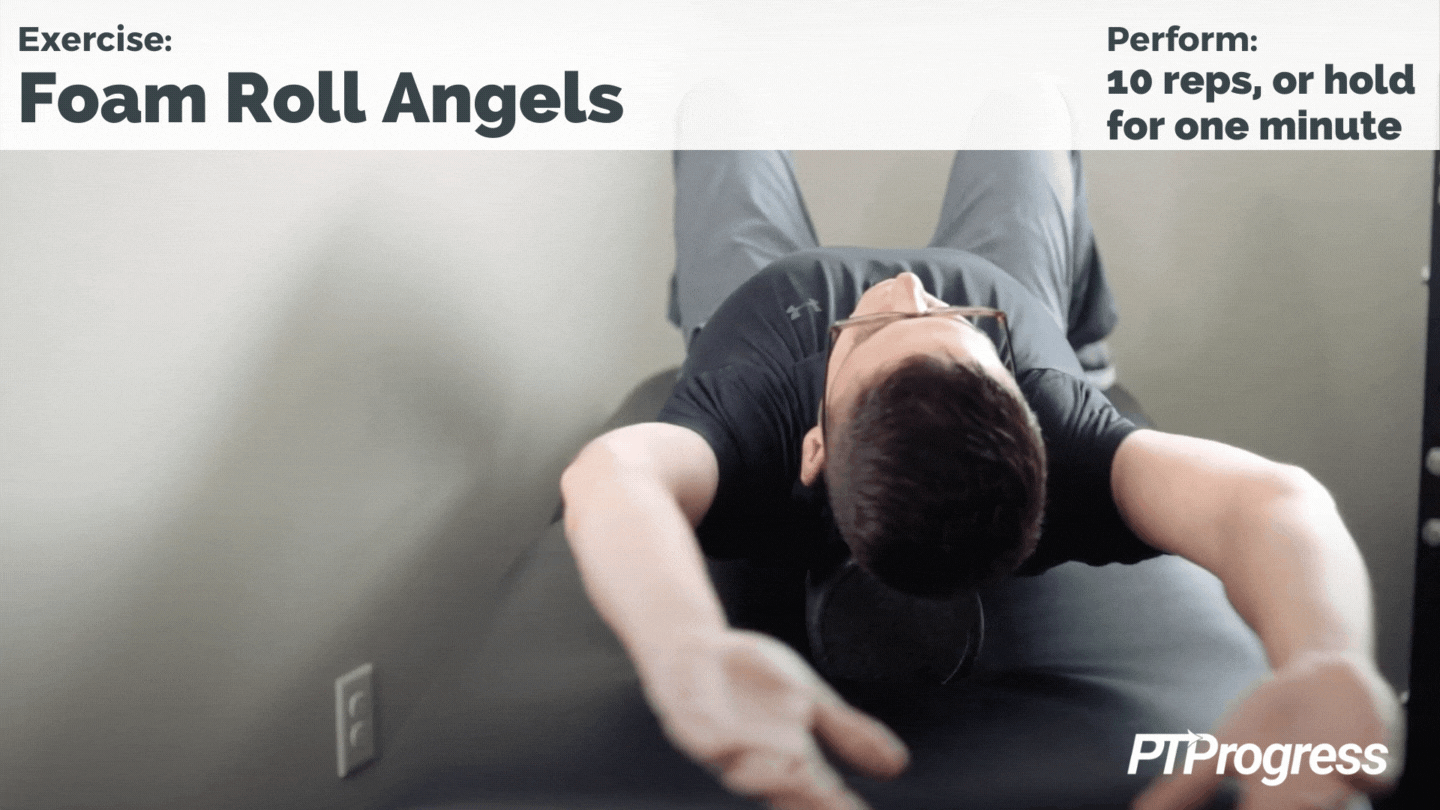
To add to this stretch, move your arms up and down as if you’re making a snow angel. This will help bring your thoracic spine into more extension and may even result in a few pops to the upper back. As you make a foam roller angel, focus on your breathing and try to time your movements with your breath, exhaling as you reach into extension. Work through about 10 of these movements, or hold the extended position for up to a minute at a time.
5. Thoracic Pull-through
Thoracic rotation, or “trunk rotation,” is difficult to measure in the clinic, but you’ll know when you’re feeling tight in this area. For better thoracic mobility in our patients, PTs use the thoracic pull-through exercise to increase extension and promote rotation.
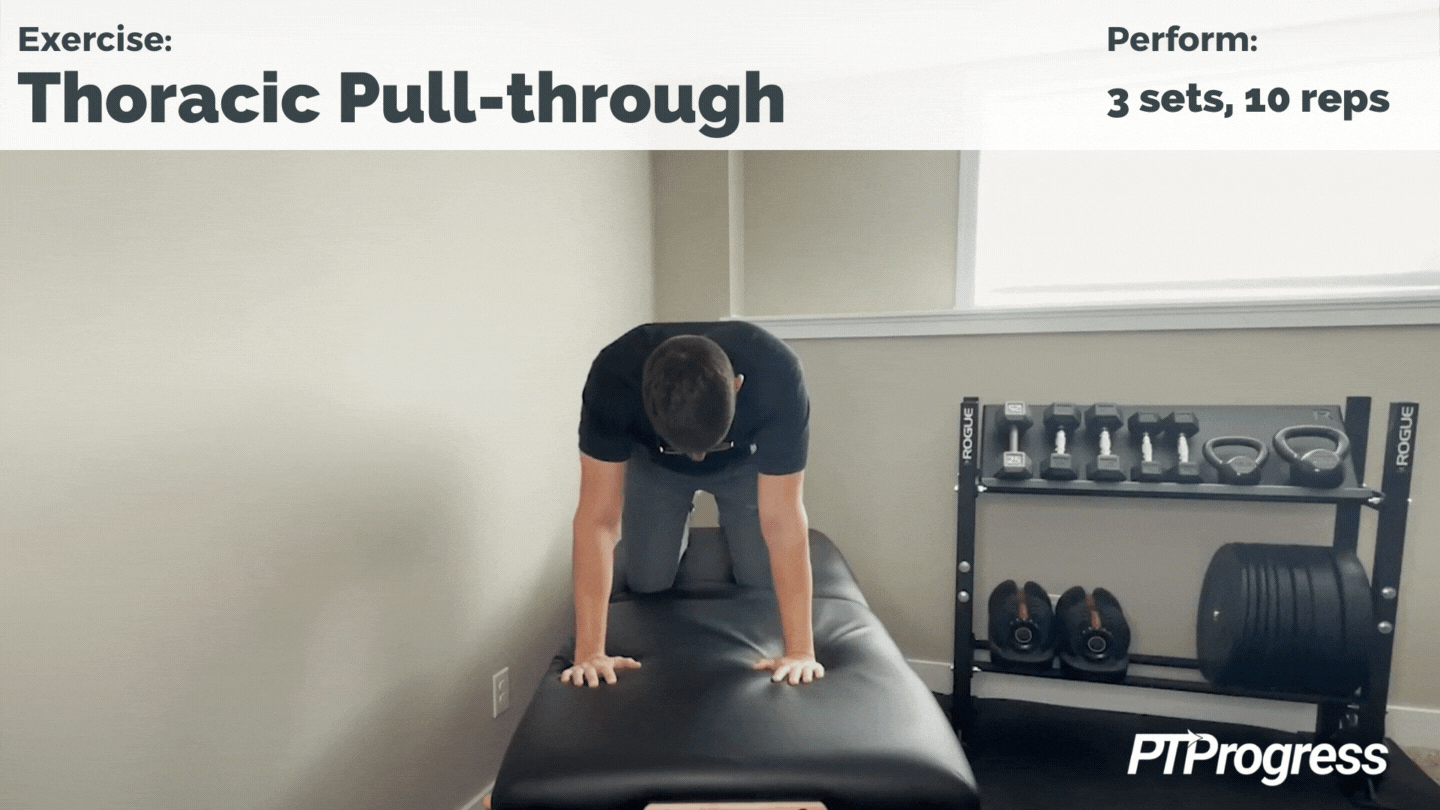
To perform this movement, begin on your hands and knees. Reach one arm under and across your body, then retract it as you rotate your spine slowly so the arm reaches towards the ceiling.
If you’re limited with this motion, don’t force it all at once. Gradually work into the range as you perform 10 pull-throughs on each side. If you want even more of a challenge, you can hold a resistance band in your stationary hand and pull it with your active hand as a way to promote shoulder stability through the range.
6. Clock Arm Stretch
This one mimics the stretch above, but additionally targets some of the tight muscles of the upper and lower back.
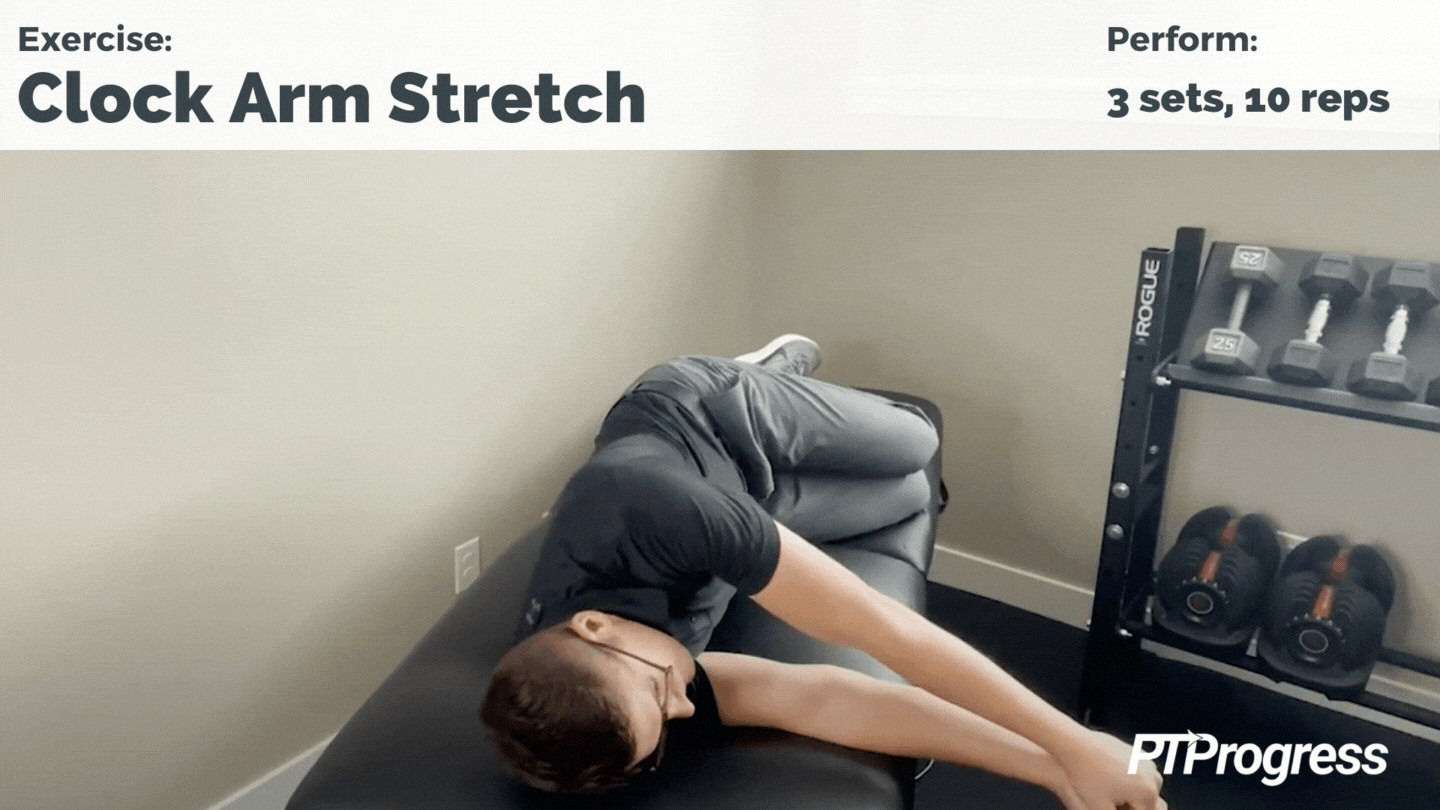
To start, lie on your left side with your arms stacked and pointing in front of you. Imagine your arms are the hands of a clock, and your head indicates the 12. Stack your arms in a 3:15 position, one on top of the other.
Keep your left arm in place as the “minute hand” as you rewind the clock and initiate the stretch. Rotate your right arm counterclockwise, up to 12:15 and as far as 9:15 if possible, without moving your hips or knees. As your right arm travels around the clock, focus on rotating your thoracic spine and eventually lumbar spine.
Alternate sides by flipping over onto your right side and moving your left hand clockwise from 9:15 to 3:15. Like the other movements, repeat this sequence 10 to 15 times, holding the stretch for 20-30 seconds wherever needed.
7. Reverse Wall Slide
I share this one a lot in the clinic because it’s great at freeing up pec tightness and promoting thoracic extension through overhead movement.
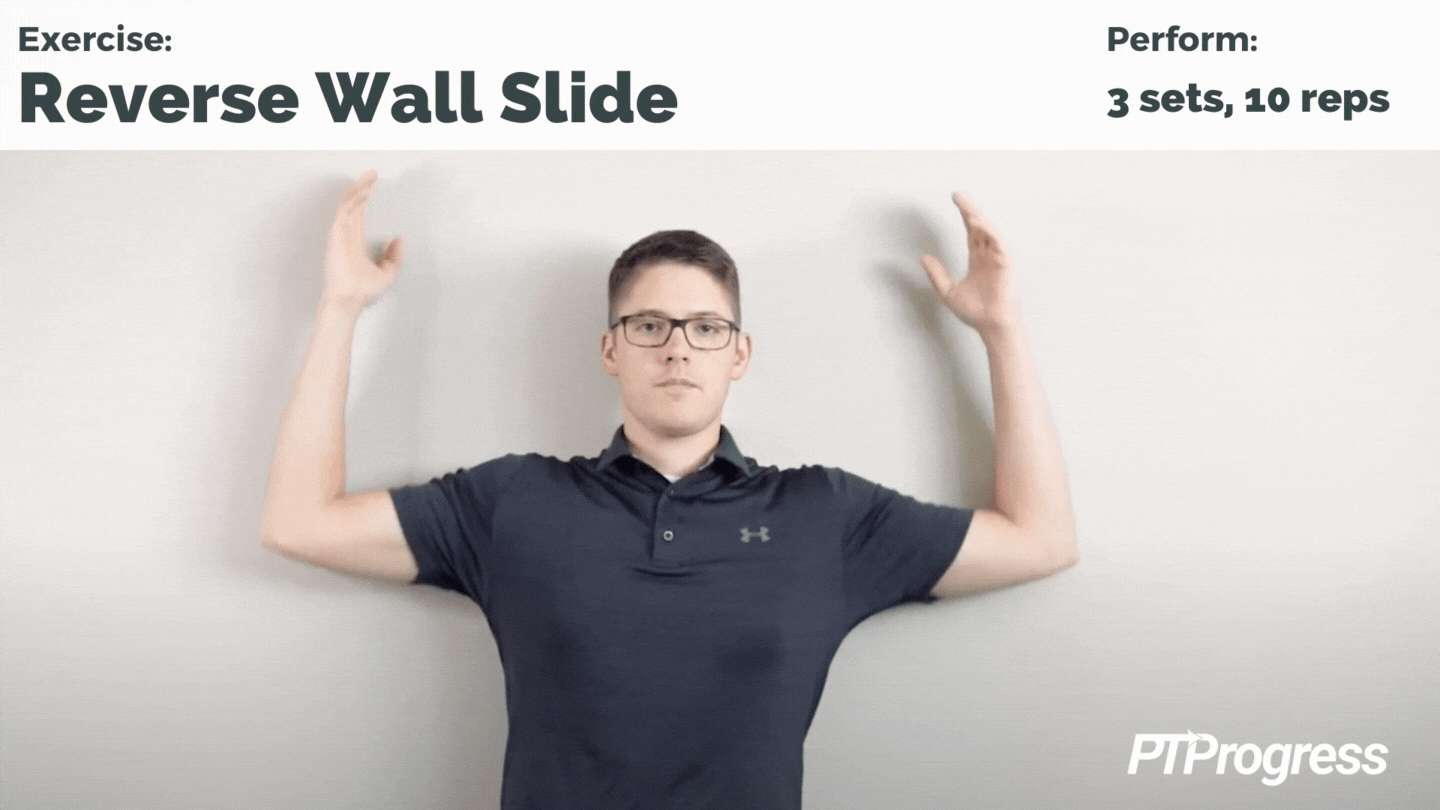
If you’re familiar with a standard wall slide, the reverse wall slide is similar. Instead of facing the wall, stand straight with your low back flat against the wall. Tighten your abdominals to help brace this position – you’ll need to maintain it throughout the movement.
Then, raise your arms with elbows bent, as if you’re making a touchdown sign, and try to slide the backs of your hands up the wall. If you’re really tight, you might struggle to keep your hands against the wall, which is a good indication you need to practice this movement every day.
A simple routine of 10 to 15 slides each day will help stretch out the chest, especially if you’re doing some of these other exercises as well.
8. Face Pull
This last exercise is one of the best movements on the list for fixing poor posture and relieving upper back pain. In case it wasn’t clear, the previous upper back stretches promote good thoracic extension and many of them use external shoulder rotation to help strengthen the scapular stabilizer muscles. But no exercise does all of this better than the face pull.
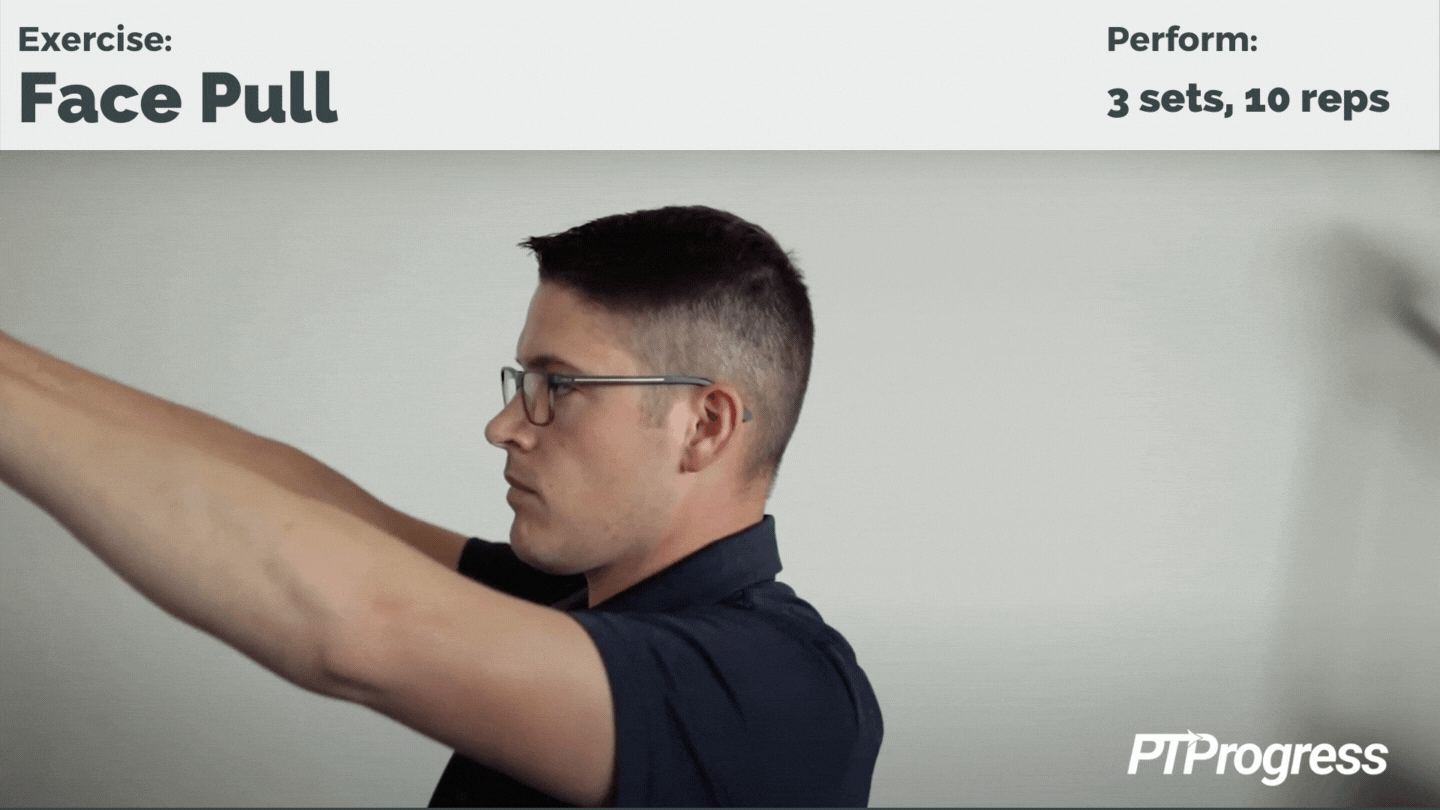
For this move, I recommend using a resistance band so that the movement will become progressively more difficult as you pull it through the range. Just be careful not to use too much resistance because that would limit your range of motion.
To perform the face pull properly, make sure you position the resistance bands high, such as in the top of a door frame, and at the midpoint so that there are two ends for you to hold. The goal is to pull the bands towards your face until your arms go into external rotation. This means your hands will need to extend past your elbows in order to achieve the full motion.
As you work through this movement 10-20 times, you’ll start to fire up the muscles of your middle trap, rhomboids, and rotator cuff.
Upper Back Pain: A Thing of the Past
Each of these exercises can help you decrease and eventually eliminate your upper back pain. However, always evaluate your lifestyle habits first; you may be aggravating upper body tension through poor postural choices like I was at my job. Once the tension has been corrected, you can work on stretching and strengthening the muscles of the upper back and get rid of the pain for good.

